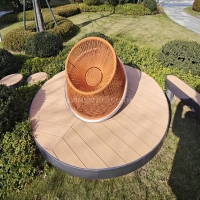Welcome to the website for landscape facilities products and knowledge.
How do landscape tables perform in high-wind environments, and what reinforcements are needed?
Landscape tables are a popular choice for outdoor spaces, but their performance in high-wind environments can be a concern. Understanding their behavior under such conditions and implementing the right reinforcements is crucial for longevity and safety.
Performance in High-Wind Environments
Landscape tables, especially those with large surfaces, act like sails in strong winds, creating lift and increasing the risk of tipping or damage. Lightweight materials like aluminum or plastic are more susceptible, while heavier materials like stone or concrete offer better resistance. However, even sturdy tables can be compromised if not properly anchored.
Key Reinforcements Needed
1. Anchoring Systems: Secure tables to the ground using anchors, bolts, or weighted bases. Permanent installations may require concrete footings.
2. Wind-Resistant Designs: Opt for perforated or slatted tabletops to reduce wind resistance. Low-profile designs also minimize uplift.
3. Material Upgrades: Choose heavier materials or add weight to the base (e.g., sandbags or built-in ballast).
4. Strategic Placement: Position tables near windbreaks like walls or hedges to reduce direct wind exposure.
5. Regular Maintenance: Inspect and tighten connections periodically to ensure stability.
By addressing these factors, landscape tables can withstand high-wind environments while maintaining functionality and aesthetic appeal. Investing in reinforcements ensures safety and extends the lifespan of your outdoor furniture.
Related search:

Recommendation
Swivel chair-Specialty steel structure woven rattan leisure chair with rotatable design